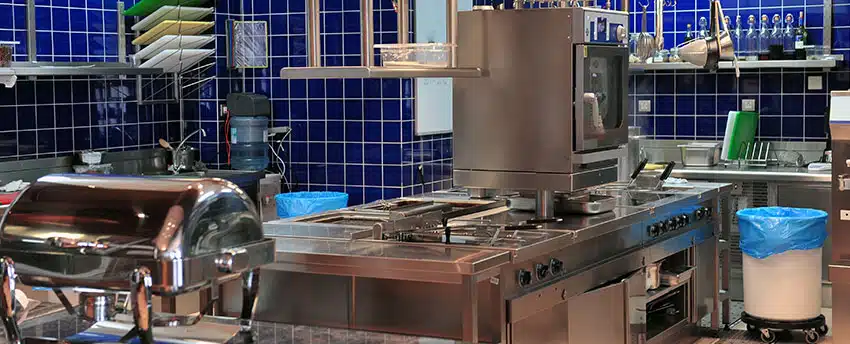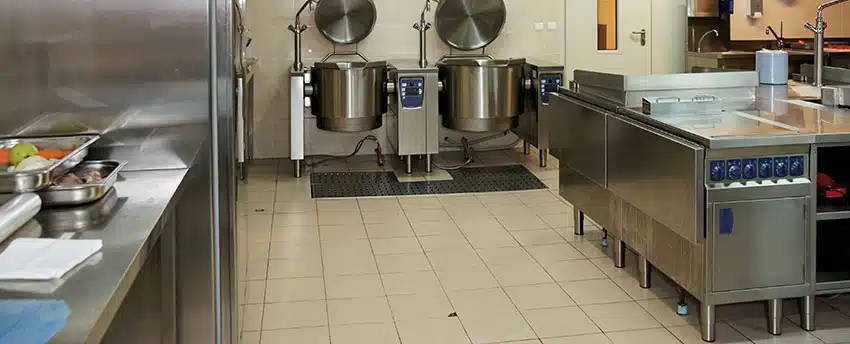Feb
Walk-In Cooler Is Spoiling Food: 8 Common Reasons
- 2024
- AirExpress
- To Write First
Your walk-in is stuffed with food that is your business’s inventory so you have to keep it fresh. But if your walk-in cooler is spoiling the food, then it’s not keeping the food in the right environment it’s supposed to. You must consult commercial refrigerator services. Here are some reasons why your walk-in cooler is spoiling food.
Causes Of Your Walk-In Cooler Spoiling The Food
Incorrect Temperature Settings
We will start with a simple cause. Check the temperature settings of the walk-in. It should be what you have set or what your management has instructed. According to the FDA, the temperature of a walk-in cooler should be below 40°F. However, many experts suggest that the ideal temperature for a walk-in chiller is 35-38°F.
As you already know these settings are for a walk-in cooler for keeping things cool. If you have a walk-in freezer, the right temperature is between 0 to -10°F.
Thermostat Problems
A thermostat showing incorrect temperature is a common issue. This can lead you or the staff to believe that the temperature is fine when in reality the temperature is warmer and that’s why the walk-in cooler may be spoiling the food stored inside.
Therefore, if you suspect that the temperature you’re seeing is not right, double-check it and use a food-grade thermometer. Place it in the central part of the walk-in cooler and in a medium height to get a good reading.
However, keep in mind that all walk-in cooler manufacturers emphasize that the temperature shown by the thermostats can be 2-4 degrees different than the actual temperature.
Poor Food Storage Practices
Bacteria growth on food or food spoilage can be due to a problem with the walk-in cooler, but in some cases, the cause may be poor food storage practices. This is a kind of a problem that you or your staff can investigate themselves so it’s better to get this out of the way so you can then have a walk-in cooler expert check the unit.
Storing A Food Item In The Walk-In Cooler That Isn’t Meant For It
A food item that must be frozen to keep fresh will be of no use if you put it in a walk-in cooler unless you have placed it for thawing. The food will allow bacteria and pathogen growth which will not only spoil that food, but can also spread to the nearby foods as well. So, always check the labels of products so you know which should be frozen and which are fine when refrigerated.
Keeping Raw Meat And Ready-To-Eat Products In The Same Rack
Raw meat and other products like fish are the most prone to spoilage and developing pathogens. Their storage life is also less compared to other products. This is why you must keep them in separate racks. In fact, every product type should be at a certain distance from others and some should be in separate racks if you have the space.
Storing Food Items In The Wrong Racks
As mentioned above, some foods are quickly perishable like meat so keeping them in the right racks is important.
Vegetables and fruits should go to the topmost shelves. That’s because the bacteria on these is less dangerous as compared to that of raw meat. So, even if water or condensation drips from them to the food items in the lower racks, it won’t cause a problem.
Then comes the place for precooked items. The rack under the produce items should be for them. Why? Precooked food already reached a high temperature of 140+° Fahrenheit killing pathogens in it so anything dripping from it is also not dangerous for the items placed beneath it. However, keep in mind that dripping from pre-cooked food is still not preferred because it can alter the taste of the food underneath it.
The rack beneath precooked food should be for dairy items like milk, cheese, and eggs. Dairy products can produce bacteria that can be harmful but as long as they are kept at a temperature of 40°F or lower, there is little to no risk of dairy contaminating the items placed in the racks under it.
The second last rack should be for raw meat. It has a high risk of developing pathogens so its dripping due to condensation is bad for other foods.
In the bottom-most rack, you should place thawing food items as they are bound to drip. Anything you put in the walk-in cooler from the freezer to defrost should go there.
Placing Sensitive Items Too Close To The Door
When the four of a walk-in is opened, warm air enters and affects the nearby items the most. So, if you have raw meat or dairy near the door, its temperature may frequently reach the danger zone (between 40°F to 140°F). Even if the temperature of these products goes to 45°F frequently, they will allow the growth of pathogens that will lead to food spoilage.
Storing Hot Items Before They Cool Down
Every food business follows this practice but sometimes, in the rush, a staff member might put precooked food in a walk-in cooler that is still releasing steam. This can be bad for the items stored in it. Because due to the increased temperature, that part of the walk-in refrigerator may become a good place for the growth of microbes.
Moreover, if this is done frequently, it can cause spoilage of a large food quantity. Plus, it will also affect the energy efficiency of the walk-in cooler as it will use more energy to cool down the hot food.
Therefore, make sure the food is cooled before you store it in the walk-in. Follow the recommendations of the US Department of Agriculture (USDA):
- If the food is in a large quantity, divide it into smaller portions for faster cooling outside and inside the walk-in cooler. Do the same for large pieces of meat.
- Clean the sink and put cold water and ice in it. You should then place the container that has the food in the sink. During this, make sure the water in the sink doesn’t get to the food in the container.
- Remember the two-stage cooling technique. In the first stage, the food should be cooled from 140-70°F within 2 hours. In the second stage, it should take about 4 hours for the food to reach the temperature of 41-40°F. When it’s at 41-40°F, you can safely put it in the walk-in cooler after covering it. Moreover, make sure never to cover the food when it’s hot.
- Additionally, don’t use the outdoors for cooling the food because there can be temperature fluctuations that can be bad for proper cooling. Moreover, animals can find the food and contaminate it.
- Use a food-grade thermometer to check the temperature of the food at various intervals.
Walk-In Cooler Problems
Any problem with a walk-in cooler that impacts its cooling ability can cause food spoilage as well. Many times, dirty condenser coils, evaporator coils, fans, or vents can cause malfunctions in walk-ins. So, make sure your walk-in is cleaned and maintained properly.
Moreover, door seal and hinges issues can leave the door unsealed. This allows warm air in, wreaking havoc on the food and increasing utility bills as well.
In addition to that, frost buildup in a walk-in cooler can cause various problems including food spoilage. This can happen due to an issue with the door, gaskets, pressure relief port, insulation, etc.
Conclusion
Food spoilage in walk-ins can be due to food storage errors or an issue with the walk-in cooler itself. So, go through the food storage practices and also have the unit inspected by a walk in cooler repair Alexandria technician.




